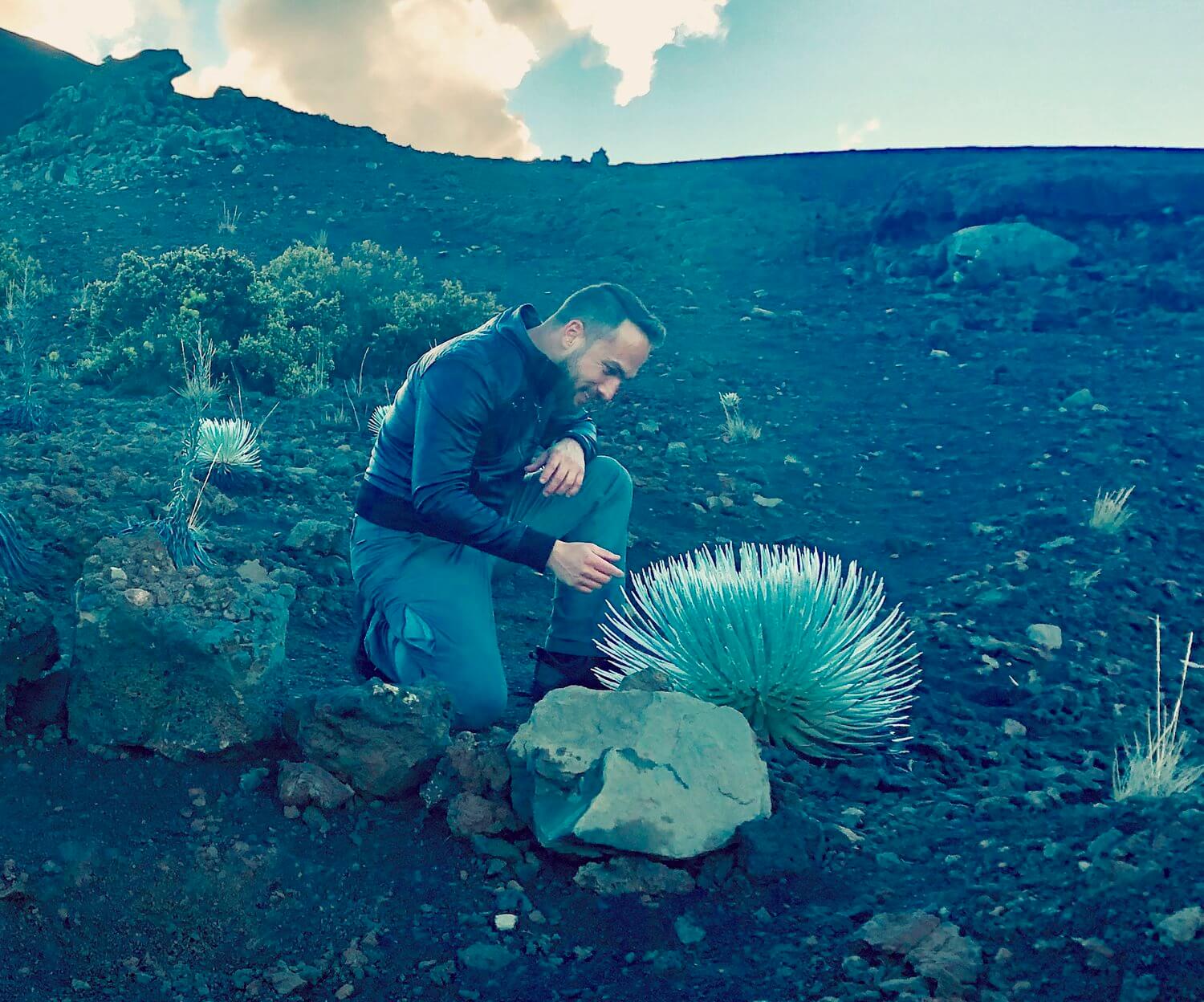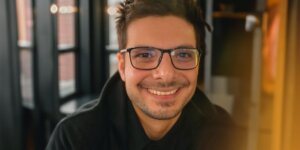
Born and raised in Hawaii, Gavan Wilhite, ’10 B.S. computer science has spent his career leveraging video game technology to create a positive impact in other industries. He helped reinvent educational games at Disney, founded AltspaceVR, a social virtual reality company later acquired by Microsoft, and is a Forbes 30 Under 30 recipient. He currently is building tools to accelerate human tissue engineering via 3D generative modeling.
Photo courtesy of Gavan Wilhite
At first, Gavan Wilhite didn’t know if he was going into movies or games.
Right before graduation, Wilhite connected with Disney Imagineering. He was recruited to be part of a secret group inside the Magic Kingdom working to reinvent educational games. They hid physics lessons in exciting games that kids couldn’t put down and shared their learning progress with parents.
“When I realized I could use the technology and the artistry behind games for impact, there was no turning back,” said Wilhite, a 2010 graduate from USC Viterbi in computer science (games).
Then came South by Southwest, 2016, and the unveiling of the Oculus Rift (originally developed at the USC Institute for Creative Technologies). Nate Mitchell, one of the co-founders, was giving demos.
“I show up, and I missed his talk,” Wilhite said. “But I caught Nate just as he was leaving, and he let me try it for five seconds.”
Five seconds was all it took to get Wilhite hooked: “I knew I had to start building something for it.”
A year later Wilhite and Nate Mitchell would share a spot on the coveted Forbes 30 Under 30 List, showcasing the brightest young entrepreneurs, breakout talents and change agents.
“If you build it, they will come”
Wilhite went on to build AltspaceVR, the first social platform for virtual reality. It quickly became a home to a wide variety of events from VR church and LGBTQI+ meetups, to large business conferences and even magic shows.
“We basically tried to replace Zoom which is why it’s painful for me to be on video calls because I know how much better it can be,” Wilhite said.
Wilhite saw people from Saudi Arabia, Brazil, Kenya, and eventually from all over the world logging in. He was inspired. Everyone at AltspaceVR knew they were building something big.
“In LGBTQI+ meetups there were people who had never been out to anyone else before now sitting in this virtual setting with their avatars sharing their stories for the first time in their lives with others,” Wilhite said.
Seeing this impact, he recalled a piece of advice he once received: “Make sure that if the project you’re working on succeeds beyond your wildest dreams, it’s actually big enough to matter to you.”
But when investors became impatient with how slow VR was developing, AltspaceVR hit a major bump in the road. Wilhite and his co-founders had to tell the talented team they had assembled that it was game over.
“If it hurts to lose, it’s worth it”
The day after the lights were turning off at AltspaceVR, Wilhite was pacing at home trying to invent ways to put the pieces back together, to keep the company alive.
That night he was supposed to be at a mini–Burning Man festival where large-scale art installations are burned at the end, an eye-opening reminder of Nihil perennate – nothing lasts forever. He decided to go there for inspiration.
“Things were falling apart and people I cared about deeply had to go separate ways,” he said. “It’s hard watching something you worked so hard to create disintegrate before your eyes.”
The founder of the Internet Archive, Brewster Kahle also happened to be at the same arts festival. He turned to see Wilhite crying as he imagined his dreams were also going up in flames. Kahle told him this: “Never work on anything that can’t make you feel that way.”
Wilhite discovered there’s an art to reflecting on mistakes without becoming obsessed with them.
“If you’re not failing some of the time, then you’re not doing things that are ambitious enough,” he said.
For Wilhite, the art also lies in disambiguating what you have lost when a project fails because oftentimes, he said, “we tie our dreams and ambitions to a project in ways they don’t have to be. At the time, I thought everything I wanted to do in VR was tied to Altspace.”
Despite the setbacks, Wilhite didn’t give up on AltspaceVR. The company was eventually acquired by Microsoft in 2017 and is now part of the mixed reality division alongside the HoloLens within the Microsoft Azure and AI group.
“Write the stories that people build”
After AltspaceVR, Wilhite wanted to push the skills he had gained in VR and games closer to atoms rather than bits, so he started exploring the field of robotics and biology. A friend of his, Melanie Matheu, had started a 3-D printing company called Prellis Biologics with a big idea – printing tissues to eliminate the organ transplant waitlist.
He joined the start-up as Vice President of Software Engineering.
Prellis uses cutting-edge optical engineering technology to print ultra-fine biomimetic tissue scaffolds for use in organ development, tissue engineering research, and therapeutic development. They 3-D print scaffolds made out of a special gel on top of which human cells can grow. The cells use some of the gel’s formulation, but primarily the geometry of the scaffold to figure out how to differentiate themselves. In this way, they can use kidney progenitor cells to make kidney or liver cells to make the building blocks of liver tissue.
Wilhite saw that it would take designers at Prellis “an insane number of hours” to AutoCAD a scaffold the size of a human kidney.
“They had the printers and the biology handled,” Wilhite said. “But they didn’t have the 3-D model files to put into the printer.”
He convinced them to let him use generative design techniques used in the games or movie industry to build cellular scaffolds.
“When they want to make a Spider Man video game, you don’t pay an artist to go make every single building in the game,” he said. “You pay a technical artist to design an algorithm that will make a bunch of buildings.”
Wilhite recognizes that people still aren’t really seeing entertainment technology as practical and it motivates him to prove otherwise. The big dream is that by doing so, one day the organ transplant waitlist will be obsolete.
“Life is way more interesting with a quest,” Wilhite said. “If you pick something that will have an impact, it will connect you to more interesting people and projects.”
Wilhite also gets inspired by near-future science fiction like those in Project Hieroglyph. The name comes from the notion that certain iconic inventions in science fiction stories serve as modern “hieroglyphs” – Arthur Clarke’s communications satellite, Robert Heinlein’s rocket ship that lands on its fins, Issac Asimov’s robot, and so on. For Wilhite, who grew up watching his father, a dentist, trying to integrate technology into his dental practice when self-healing teeth and non-chemical disinfectants were pure science fiction, it starts with the stories we tell each other.
“There are plenty of doomsday scenarios about what could go wrong,” he said. “We need to write the stories about how it goes right.”
Published on March 23rd, 2021
Last updated on May 16th, 2024










